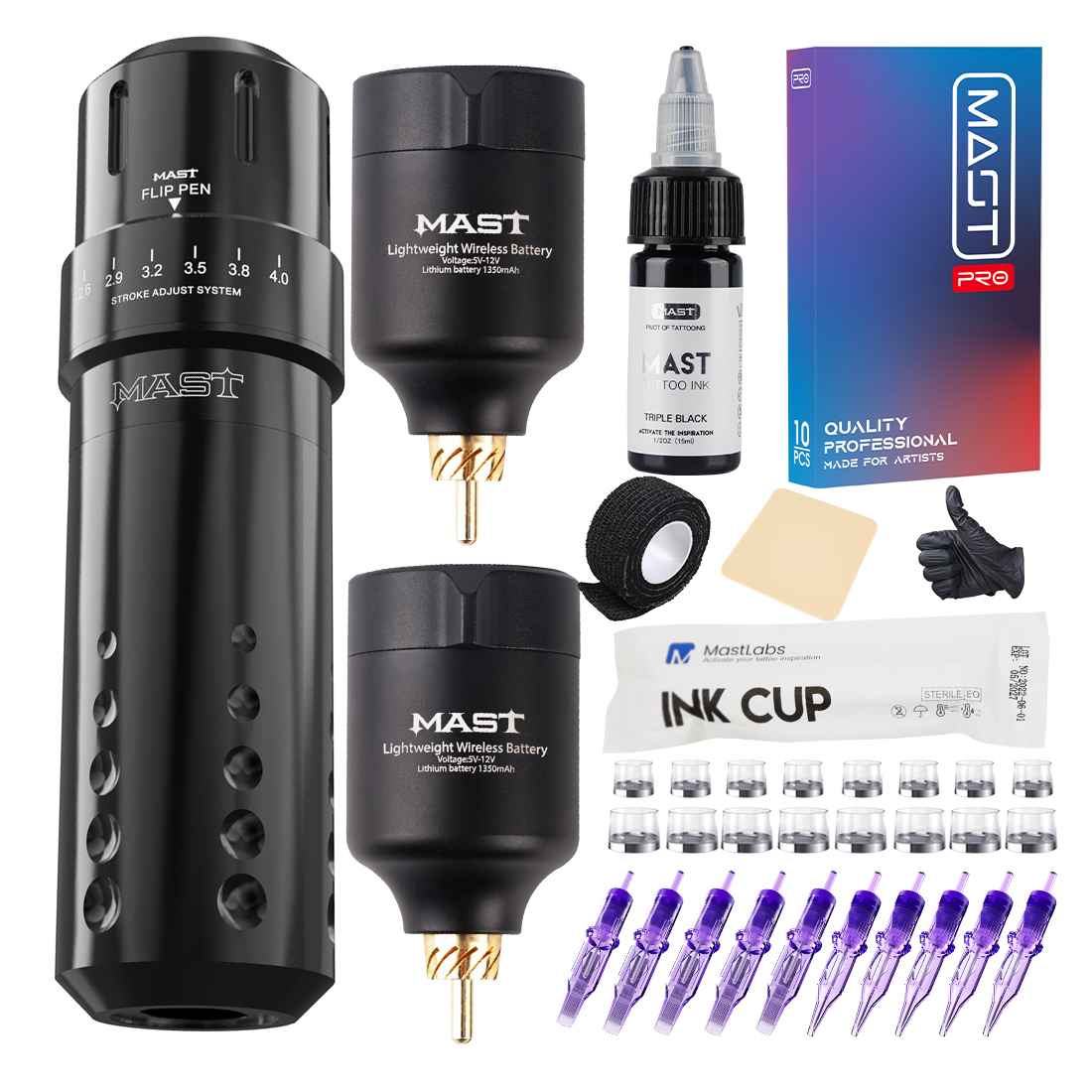Tattoos have long captivated us with their ability to make a permanent mark on our skin, serving as artistic expressions and personal narratives.
We cherish the intricate designs and symbols that adorn our bodies, believing them to be fixed in place.
However, hidden beneath the surface lies a curious question that piques our curiosity: Is it possible for a tattoo to move?
In this thought-provoking post, we delve into the enigmatic world of tattoos and unravel the truth behind this seemingly fantastical notion.
Brace yourself for a captivating journey where we challenge the very limits of what we think we know about these indelible ink creations.
Prepare to discover whether tattoos possess the power to transcend the boundaries of our skin and embark on their own mysterious migration.
Understanding the Basics of Tattoos
In the vast realm of artistic expression, few mediums carry as profound a personal significance as tattoos.
From ancient civilizations to modern times, tattoos have adorned human bodies, leaving an indelible mark on both the canvas of flesh and the tapestry of culture.
Definition of a tattoo and its purpose
At its core, a tattoo is a permanent design or pattern etched into the skin using indelible ink.
Beyond mere body art, tattoos serve as powerful symbols of identity, self-expression, and personal stories.
They can represent cherished memories, spiritual beliefs, cultural heritage, or simply serve as beautiful adornments.
With their ability to evoke emotions and spark conversations, tattoos forge connections between the individual and the world, allowing a person’s innermost thoughts and experiences to be shared through an external canvas.
Explanation of the tattooing process
Behind the artistry of tattoos lies a meticulous process that involves skilled tattoo artists and their deft hands.
Tattooing begins with a design, carefully crafted to suit the client’s desires and aesthetic preferences.
The artist then sterilizes the equipment, typically including a tattoo machine or a traditional hand-held tool called a “tattoo gun.”
The tattooist uses fine needles to puncture the outer layer of the skin, injecting ink into the dermis, the second layer beneath the epidermis.
This technique ensures the longevity of the tattoo, as the ink becomes permanently trapped within the skin’s deeper layers.
Overview of how tattoos are typically perceived as static body art
Throughout history, tattoos have often been regarded as static body art, unchanging and forever embedded in the skin.
However, as our understanding of the human body and the aging process evolves, we begin to recognize the dynamic nature of tattoos.
While tattoos are initially vibrant and crisp, their appearance can alter over time due to various factors such as aging, sun exposure, weight fluctuations, and skin elasticity.
The once-sharp lines may blur, colors may fade or shift, and the overall clarity of the design may undergo subtle changes.
These transformations add another layer of intrigue to the ever-evolving story told by tattoos.
Also Read: Why do old tattoos spread?
Tattoo Designs and Placement
As the popularity of body art continues to soar, choosing the right design and placement becomes increasingly crucial to ensure a lifelong connection with our inked masterpieces.
Importance of Selecting a Suitable Design and Placement
When it comes to tattoos, design and placement are intrinsically linked, working in harmony to create a visually striking and cohesive piece of art.
The design you choose and where you place it on your body can profoundly impact its longevity, readability, and overall impact.
A well-thought-out design, tailored to your preferences and individuality, coupled with careful consideration of the placement, can elevate your tattoo into a timeless masterpiece that grows with you throughout the ages.
Factors Influencing Tattoo Design Choices
The realm of tattoo design is as vast as it is diverse, offering an expansive palette of possibilities for self-expression.
Personal interests, cultural influences, and symbolic representations all play a role in shaping the choices we make when selecting a tattoo design.
Some may find solace in the minimalist elegance of fine line work, while others may seek intricate, vibrant compositions that burst with life.
Exploring different styles, consulting with skilled tattoo artists, and carefully curating a design that resonates with your identity are vital steps in ensuring a tattoo that remains visually captivating for years to come.
Popular Tattoo Placements on the Body
Just as important as the design itself is the strategic placement of a tattoo on the body.
Each area offers its unique canvas, influencing factors such as visibility, pain tolerance, and potential changes due to aging.
The back serves as a vast landscape for larger, intricate designs, while the arms and legs provide versatility for showcasing both individual tattoos and larger compositions.
The wrists, ankles, and fingers offer delicate spaces ideal for smaller, symbolic designs, while the chest and ribcage invite bold statements and intimate revelations.
By exploring popular tattoo placements, one can find inspiration and insights to ensure their chosen design aligns harmoniously with the body’s natural contours.
Also Read: What happens to tattoos when you are older?
Tattoo Movement Perception
As living art etched onto our bodies, they hold the power to express our passions, beliefs, and personal narratives.
While tattoos are traditionally seen as static images, there is an intriguing aspect that often eludes common perception: the perception of movement.
Addressing the Misconceptions Around Tattoo Movement
When it comes to tattoos, it is not uncommon for individuals to assume that these permanent markings remain static throughout their lifespan.
However, the reality is far more nuanced. To fully appreciate the potential for movement in tattoos, it is crucial to dispel the misconceptions that may hinder our understanding.
By challenging these preconceived notions, we can unlock a deeper appreciation for the artistry and craftsmanship behind the illusion of motion.
Psychological and Visual Effects Creating an Illusion of Movement
The perception of movement within tattoos is a multi-faceted phenomenon, influenced by both psychological and visual factors.
Our brains are wired to seek patterns, motion, and change, and when these elements are cleverly incorporated into tattoo designs, they can evoke a mesmerizing sense of dynamism.
From the clever use of shading and linework to strategic placement on the body, skilled tattoo artists employ various techniques to give rise to the illusion of movement.
Understanding these psychological and visual effects can help us appreciate the art form on a deeper level.
Examples of Tattoos That Give the Impression of Motion
To truly grasp the enchanting world of tattoo movement perception, we explore a diverse array of examples that showcase how tattoos can emulate the essence of motion.
From lifelike animals frozen mid-stride to cascading waterfalls seemingly flowing across the skin, these remarkable tattoos blur the boundaries between art and reality.
Through these captivating examples, we witness the astounding talent and creativity of tattoo artists who possess the ability to breathe life into their designs.
Tattoo Fading and Distortion
Tattoo designs, once vibrant and bold, may gradually undergo a metamorphosis, leaving us to ponder the mysteries of tattoo fading and distortion.
Discussion on the changes tattoos may undergo over time
Tattoos, much like time itself, are not impervious to change. The once vibrant hues and sharp lines that adorned your skin may gradually fade and blur as the years pass.
This natural progression can be attributed to various factors, all of which contribute to the unique story that tattoos tell as they age gracefully.
Understanding these changes is crucial in preserving the integrity of your body art and ensuring its longevity.
Factors contributing to tattoo fading and distortion
While tattoos are designed to be permanent, external influences and internal physiological processes can alter their appearance.
Sun exposure, for instance, acts as a relentless force that can cause colors to fade and lines to blur.
Ultraviolet (UV) radiation breaks down the pigments in tattoos, leading to a gradual loss of vibrancy.
Additionally, the skin’s natural aging process can result in the thinning and sagging of tissues, leading to distortion and stretching of the tattooed area.
Other factors that contribute to tattoo fading and distortion include improper aftercare during the healing process, frequent exposure to chlorine in swimming pools, and using harsh skincare products that can accelerate pigment degradation.
Each individual’s body chemistry and lifestyle choices play a role in determining how tattoos evolve over time.
Tips for maintaining tattoo quality and minimizing distortion
While the aging process inevitably affects tattoos, there are measures you can take to minimize fading and distortion, allowing your body art to retain its vibrancy and clarity for years to come.
Here are some essential tips to help preserve the quality of your tattoos:
Sun protection: Shield your tattoos from harmful UV rays by applying a broad-spectrum sunscreen with a high SPF regularly.
Whenever possible, seek shade or cover your tattoos with clothing to minimize sun exposure.
Moisturize and hydrate: Keep your skin healthy and hydrated by moisturizing regularly.
Dry skin can contribute to tattoo fading, so opt for fragrance-free lotions or specialized tattoo aftercare products.
Gentle skincare: When washing and exfoliating your skin, opt for mild, fragrance-free products.
Harsh cleansers and exfoliators can strip away the outer layer of your skin and affect the appearance of your tattoos.
Avoid chlorine exposure: If you have fresh tattoos, it’s best to avoid swimming pools or hot tubs with high chlorine levels until they are fully healed. Chlorine can cause irritation and fading.
Regular touch-ups: Consider scheduling touch-up sessions with a skilled tattoo artist to revive colors and refine details that may have faded or blurred over time.
Also Read: Do tattoos move with age?
Technological Advances in Dynamic Tattoos
The era of dynamic tattoos is upon us, where artistry and technology intertwine to create captivating visual experiences.
Here, we’ll take a look at cutting-edge techniques, where ink transcends its traditional boundaries and embraces the realm of animation.
Introduction to Emerging Technologies in the Tattoo Industry
Advancements in technology have always pushed the boundaries of artistic expression, and the tattoo industry is no exception.
From augmented reality to smart textiles, a myriad of innovative technologies have paved the way for dynamic tattoos.
These breakthroughs combine the age-old tradition of tattooing with the limitless possibilities of the digital realm, enabling designs to evolve, transform, and even interact with their surroundings.
Overview of New Techniques Enabling Movement in Tattoos
One of the most remarkable aspects of dynamic tattoos is the ability to introduce movement to traditionally static designs.
Thanks to advancements in microelectronics, conductive ink, and flexible circuits, tattoo artists can now incorporate motion into their creations.
This transformative technology brings tattoos to life through subtle animations, providing a mesmerizing visual experience that captivates both the wearer and those who behold these animated works of art.
Examples of Dynamic Tattoo Designs and Their Features
To truly grasp the awe-inspiring potential of dynamic tattoos, let’s delve into some notable examples that showcase the limitless creativity and technological marvels behind this emerging art form.
From luminescent tattoos that respond to soundwaves to designs that change color according to body temperature or heart rate, the possibilities are as diverse as the imagination of the tattoo artist.
These dynamic tattoos are not only visually striking but also offer an intimate connection between the wearer and their body art, reflecting personal emotions, experiences, and even the surrounding environment.
Tattoo Removal and Modification
In the vast landscape of body art, where ink becomes an indelible part of our identity, there may come a time when the desire for change or evolution prompts us to explore the realms of tattoo removal and modification.
Whether it’s bidding farewell to a once-loved design or seeking to enhance an existing masterpiece, the possibilities are as infinite as the human imagination.
Brief overview of tattoo removal options
When it comes to bidding farewell to a tattoo, numerous methods have emerged as viable options in recent years.
Advancements in technology have paved the way for more efficient and effective removal techniques.
Laser tattoo removal, for instance, has become a popular choice due to its ability to break down the ink particles with focused light pulses, gradually fading the tattoo over multiple sessions.
Other methods include surgical excision, dermabrasion, and chemical peels, each offering distinct approaches to tattoo removal.
However, it’s essential to recognize that the efficacy and suitability of these methods can vary depending on factors such as tattoo size, color, and location on the body.
Considerations for modifying an existing tattoo
Sometimes, the desire to modify an existing tattoo can be as strong as the original desire to get it.
Whether it’s adding new elements, covering up parts of the design, or incorporating fresh colors, the possibilities for transforming an existing tattoo are limited only by one’s imagination.
However, before embarking on the path of modification, it is crucial to consider certain factors.
The size, color, and placement of the existing tattoo, as well as the intended modifications, play vital roles in determining the feasibility and success of the transformation.
Furthermore, understanding the limitations of the skin and the tattoo artist’s expertise can guide the decision-making process and ensure a satisfying outcome.
Importance of consulting a professional for tattoo modifications
While the allure of DIY tattoo modifications may be tempting, the importance of consulting a professional tattoo artist cannot be overstated.
Tattoo artists possess a deep understanding of the intricacies of skin, ink, and design, honed through years of experience and artistic expertise.
Seeking their guidance and expertise ensures that modifications are executed safely, preserving the health of the skin and achieving the desired aesthetic outcome.
A professional tattoo artist can provide valuable insights into the technical aspects of modification, suggest creative ideas, and guide you through the entire process, ensuring a result that is both visually stunning and emotionally meaningful.
Also Read: Do tattoos change with age?
Conclusion
In the realm of body art, where creativity and self-expression intertwine, we have explored the captivating question: Is it possible for a tattoo to move?
Throughout this journey, we have unraveled the truth behind this intriguing concept.
While tattoos themselves cannot physically shift their position on the skin, they do have the remarkable ability to evolve and adapt as we grow and change.
We have discovered the transformative power of tattoo removal and modification, understanding that our inked stories can take on new meanings and shapes over time.
So, embrace the fluidity of self-expression, and let your tattoos be a testament to your ever-evolving identity.
Express yourself boldly, for the beauty of tattoos lies not in their movement, but in the dynamic stories they tell upon our skin.






